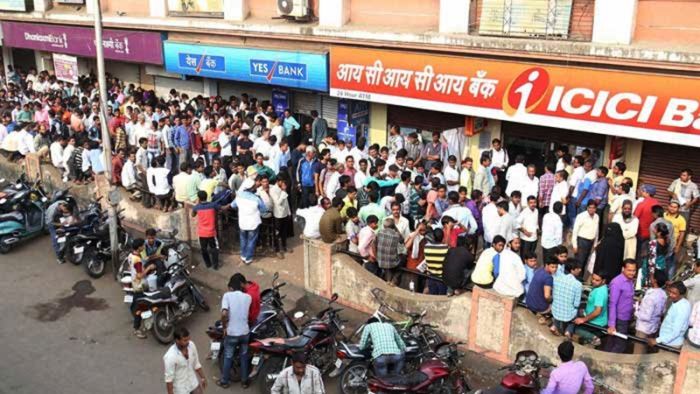By: GAUHAR RAZA
I was late, and the rain that had started falling late in the night continued through the morning. I was worried about the camps at Ramlila Maidan, where thousands of workers, peasants and landless labourers were to spend the night before the September 5 rally. There was no point in going there now so I decided to go directly to Parliament Street, which directly connects the seat of power to the rest of India, where the march was to culminate.
I expected the event to be a non-starter due to the heavy rains. Those who had come from distant places would have no choice but to attend the meet, and those expected from nearby states would not be able to reach. The weather was likely to dampen revolutionary enthusiasm and fervour; after all the revolutionary classes, workers and farmers, are human beings too and affected by bad weather as much as anyone else.
While sitting in the metro my thoughts turned towards the golden days when, in India, the Left was a major force to reckon with. We had seen massive gatherings and demonstrations in Delhi. The Boat Club was the hub of resistance, and here, especially after the Emergency, the CPI(M), CPI and the Left parties had in the 70s and 80s organised many memorable rallies. In these demonstrations industrial workers, peasants, youths and middle-class mass organisations had participated with revolutionary enthusiasm.
Repeatedly we read and hear that ‘the Left has grown progressively weak and marginalised in the past thirty years in India’. This reality is reflected in the secular decline in the number of Left MPs, and electoral losses in West Bengal and Tripura. Even in the golden days they never had the money to purchase crowds like the other parties did. Besides Kerala, which is still facing the wrath of nature, they are not in power anywhere in India to pressurise the bureaucracy to collect crowds.
I was reminded of Rajasthan where the BJP has been accused of using government funds and machinery for supporting their campaigns. Unlike the Long March to Bombay earlier this year, the BJP-controlled media had completely ignored this rally. There was no publicity for it to be seen anywhere in India, not even Delhi. No big hoardings or posters announcing the event and inviting people to participate in it. And on top of this hard reality the rain had completely disrupted normal life.
I came out of the metro station at Sivaji Stadium and as expected saw no unusual crowd. The rain had stopped and my disappointment rose. I turned towards the Gurdwara Bangla Saheb, the crowed still not unusually large, but I could see groups moving around holding red flags. I stopped one of them and asked, ‘Is the rally over? Are you going back?’ He hurriedly replied ‘No, it is going on.’
I took another left turn towards the YMCA and was taken aback. I could not believe my eyes. I witnessed a sea of human bodies, red flags and placards. Like a drop of water I entered the ocean and drifted with the flow of its currents.
It was the first time that industrial workers and farmers including landless labour had come from all over the country to express their anger against government policies. From Palika Bazar to the Parliament Street police station, there was no room to move.
I decided to walk from the tail end to the makeshift stage near the thana. It was a difficult task; the short journey took over an hour. But I was determined to witness this demonstration in its full magnificence and splendour. One after the other, leaders of various mass organisations spoke and were applauded by the participating workers and peasants. The participants were waving red flags with revolutionary zeal.
By the time I reached the enclosure, Comrade Sitaram, general secretary of the CPI(M) had come on stage. He waved to the crowed and saluted them. Sita Ram did not speak. After all it was a rally of mass organisations and not the party. He had come there only to express solidarity on the party’s behalf. Without any fanfare, as he had appeared on the stage he disappeared.
The working class had gathered at Parliament Street to demand a curb on price rise, the generation of jobs and job security, to stop forcible land acquisition, to provide relief and rehabilitation for the victims of natural calamities; besides some specific demands such as minimum wages of Rs 18,000 per month and a debt waiver for poor peasants.
Should every citizen of India not raise these demands?
There were no slogans of Bharat Mata, Shri Ram was not invoked, Allah ho Akbar was absent, pseudo-nationalism was missing, ‘seema pe jawaan…’ (Our soldiers at the border…) was not uttered. The rally was a strong rebuttal to divisive politics.
When I congratulated a comrade, one of the architects of the rally and an unassuming member of Parliament, he hugged me and said ‘Comrade we can do it!’ The communication between us was perfect. He was referring to the miracle being performed on Parliament Street by the mass organisations. Against all odds, without money power and without invoking religion communists can lead workers, peasants and landless labour to express their demands.
Another oft-repeated declaration is that the end of the Soviet Union was also the end of Marxism as a philosophy and Communism as a structure of society. ‘You can’t expect communist revolutions any more.’ The hidden assertion is: don’t even try to organise the working class and peasantry, it will lead nowhere, it’s a dead end.
A communist revolution led by the working class was a 20th century utopian dream. Building an egalitarian society may sound good but is far from an achievable reality. All of us have to live with the realities constructed and managed by capitalism and imperialism.
I had been quite sceptical and expected a flop show.
Courtesy www.thecitizen.in




